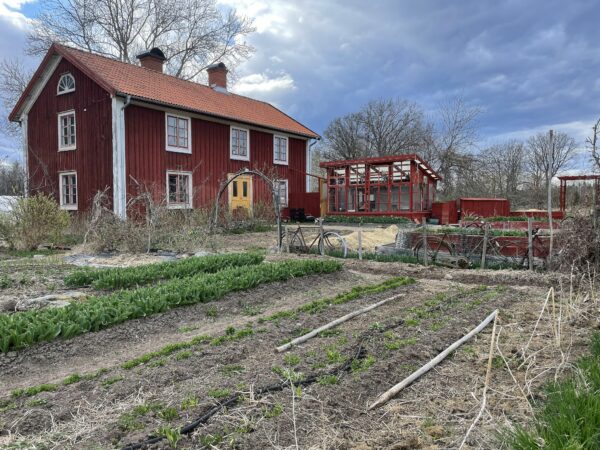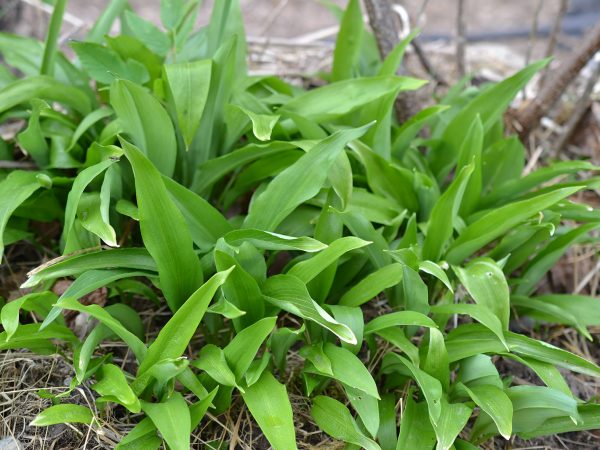My 3 Best Tips on Picking a Grow Light
Did you get a grow light for your indoor projects, but finding it hard to get it working properly? Here are my 3 best tips on picking a grow light for your winter sowings!
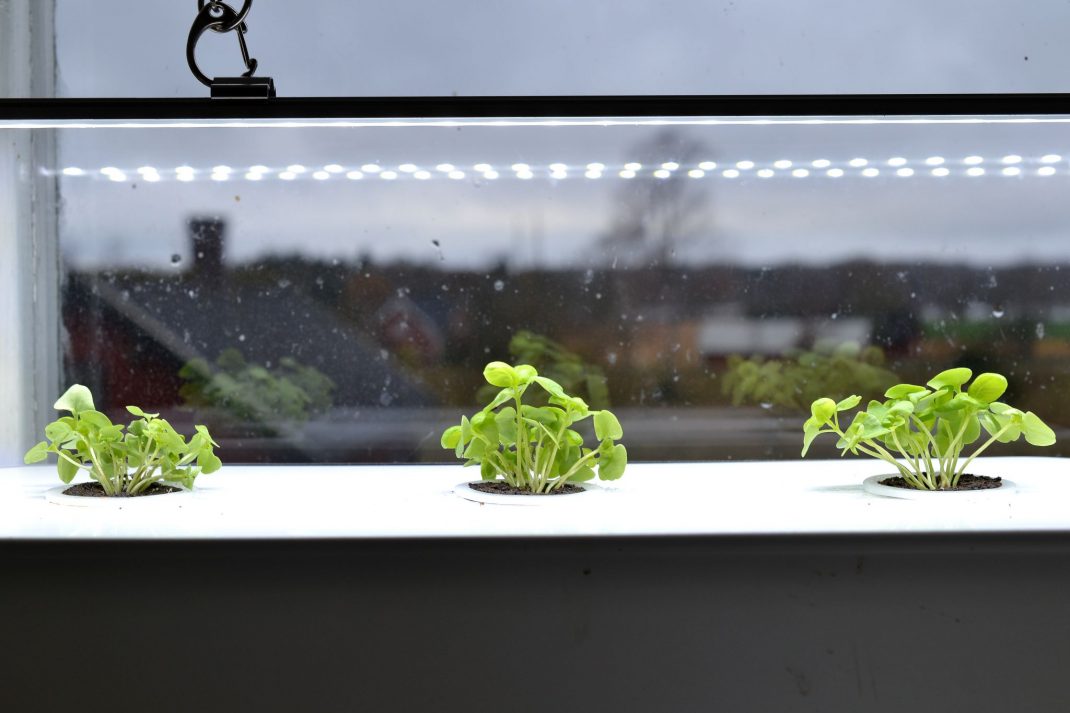
Here are my three little basil plants, growing in a hydroponic system (water and fertilizer) under a grow light. Keep reading to learn everything you need to know about picking a grow light!
It's getting darker outside and it's time to start using your grow lights again! I'm for example getting ready to do new fall sowings of leafy greens indoors. Right now, I have a few containers filled with sprouts and leafy greens as well as two hydroponic systems with basil. The kitchen floor is covered with old candy boxes that I'm going to use to sow plenty of new leaves. The grow lights are going up soon too.
This is a subject that a lot of you want to know more about. Many of you ask me how grow lights work and why the result sometimes don't turn out as expected. So, that's why I wanted to write a bit more about how you go about picking a grow light.
Keep reading to learn my 3 best tips on picking a grow light and how you can grow vegetables indoors during wintertime too! You can use these pointers to pre-grow greens or flowers in winter, late winter and spring too if you start early with a grow light.
Read more: 10 vegetables you can grow indoors
Keep it Close
The most common mistake that many beginners do is that they put the grow light too far away from the plants. I've seen pictures of grow lights located 1.5 ft (50 cm) above the seedlings. Perhaps because the gardener hoped that the light would cover a larger area. But this is rarely the effect. Instead, the light gets quite faded once it reaches the seedlings. This causes them to reach for the daylight coming in from the window instead, and they can almost start growing horizontally. And if this wasn't enough, some of your vegetables are going to develop a long gangly stalk while they try to get closer to the light. Later on, you'll notice that your plants look lackluster and pale. They become more sensitive to pests and in worst cases, the plants just die.
What to do instead then? Well, the first step is to keep the light source close to the plants. This is extra important when they are very small and sensitive. Try to keep the light around 4-6 inches (15-20 cm) from the plants. If you don't have enough light for your seedlings, then I would recommend growing fewer plants or getting more/larger grow lights.
Adjustable Grow Light
Another thing we need to know when picking a grow light is that some are stronger than others. Some of my high-power grow lights work just fine at a distance too, but I need to be a lot more careful with others. I especially like the adjustable ones that you can move as you want.
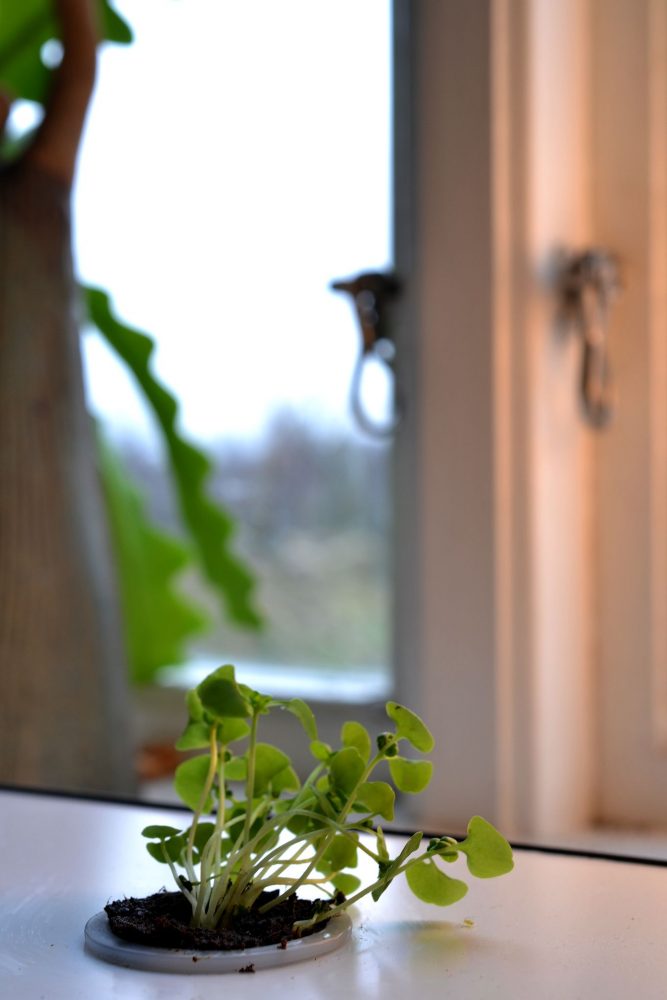
I'm growing this basil in a hydroponic system, without a grow light. It's not doing too well. The leaves look pale, the stalks are longer and reaching for the window to get to the light. Plants like these can die because of the poor conditions in the room. It can happen to all kinds of vegetables like cabbage, tomato or basil.
12-14 Hours of Light
You might think that more is more when it comes to light. But this actually isn't true. Don't keep the grow light on all the time. The plants won't like it at all. I think that around 12-14 hours per day is perfect. Most of the people who grow indoors in winter connect their lights to a timer. I recommend it!
When you're picking a grow light, you want to think about the conditions that the plants generally thrive in outdoors. A lot of them do well in 12-14 hours of daylight, but some vegetables grow better when the days are shorter. For example Asian leafy greens, radish and arugula. Some lettuce varieties do better with less light too. If you were to keep these in room temperature with a grow light on during half of the day, they might just bolt instead. Try to experiment and use the grow light for 8 hours per day and add more time if needed.
More:
- Grow pea shoots indoors
- How to grow microgreens at home
- Ripen tomatoes indoors
- Fertilize with diluted urine indoors
Temperature
The temperature is the third key to success when you grow vegetables indoors in winter. This is also a good opportunity to think about what the vegetables prefer outside. Many of the vegetables we grow indoors are actually in their prime in spring and fall. So, they grow best when it's cool and damp outside. That's why you might want to put your plants and grow lights in a slightly cooler space. This makes it a lot easier to create a good environment for your plants. They get less stressed and don't necessarily feel the need to bolt with cooler temperatures either.
I think that 60-65 degrees (around 16-18 degrees Celsius) is just about right. Remember that the grow light radiates heat too.
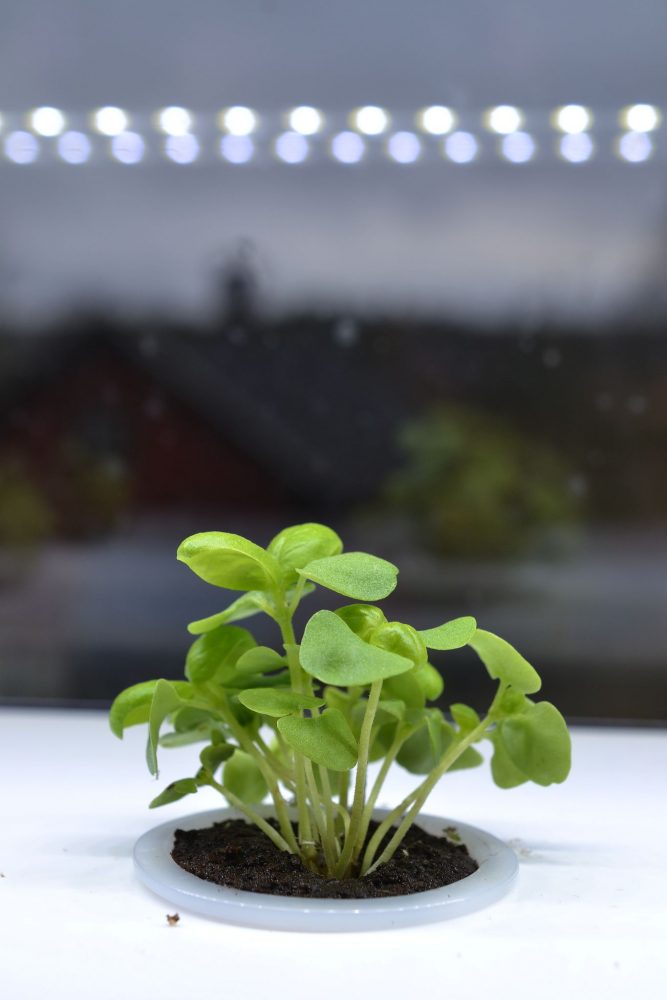
I sowed this plant on the same day as the basil plant in the previous picture. This plant has lush green leaves, short and sturdy stalks and few visible damages. The grow light is hanging around 4 inches (10 cm) above the plants. You should always consider the distance when you're thinking about picking a grow light.
Compromising
I have to mention that it's not necessarily easy to create the best conditions to grow indoors in a regular room. Many things can after all go wrong. Especially as the vegetables grow and you get less space to work with. Then, you need to compromise a bit and might not be able to give the plants exactly what they need. But I recommend doing as much as you can while they're still small. This will give them a great start that makes your job a lot easier later on.
Read more: Growing light-germinating seeds
You can find plenty of inspiration on growing vegetables indoors during fall and winter here on the blog. Make sure to check out the links I put in this post for more tips! Or, ask around in the many gardening groups here on Facebook. It's just so inspiring to see how other garden enthusiasts create the right environment for their plants indoors too!
Good luck picking a grow light that suits you!
/Sara Bäckmo
23. November 2020

